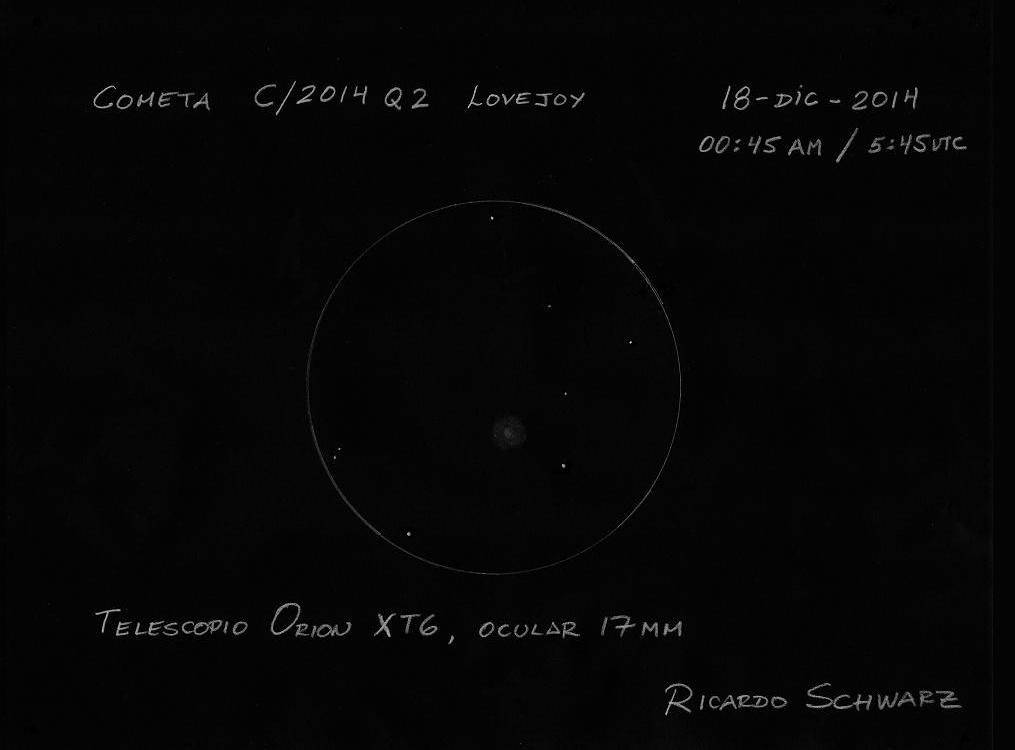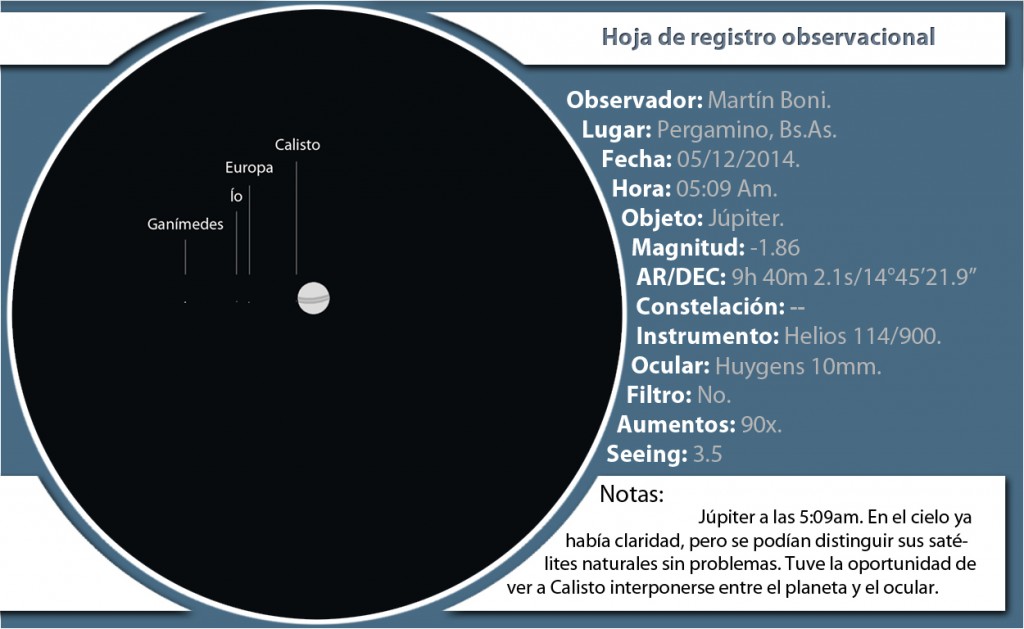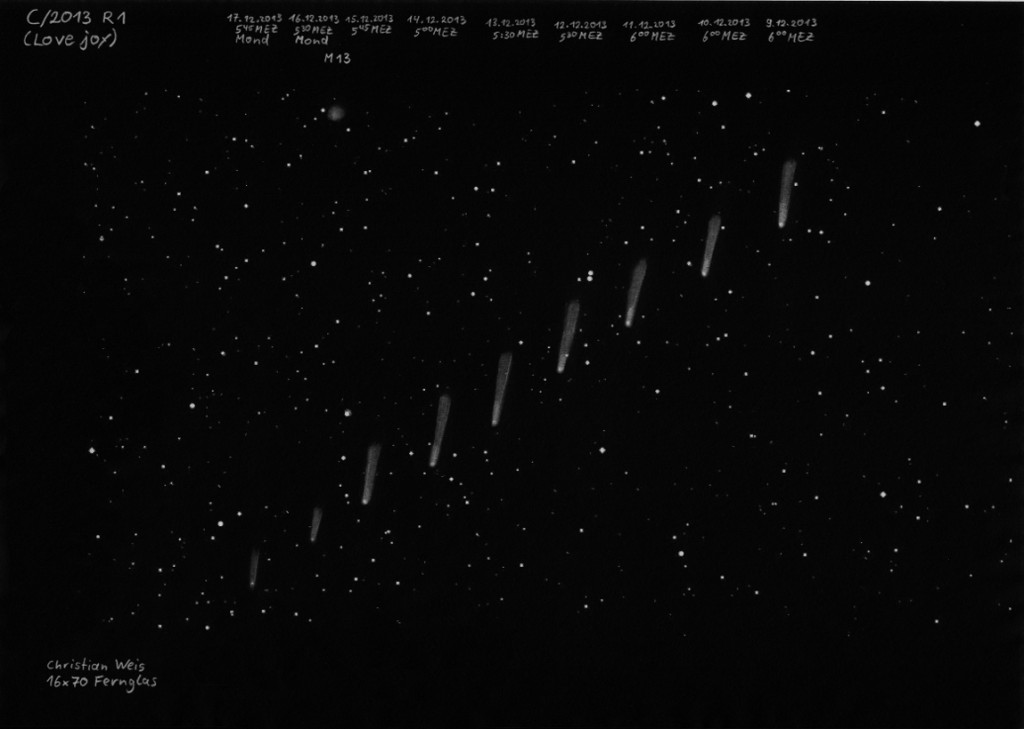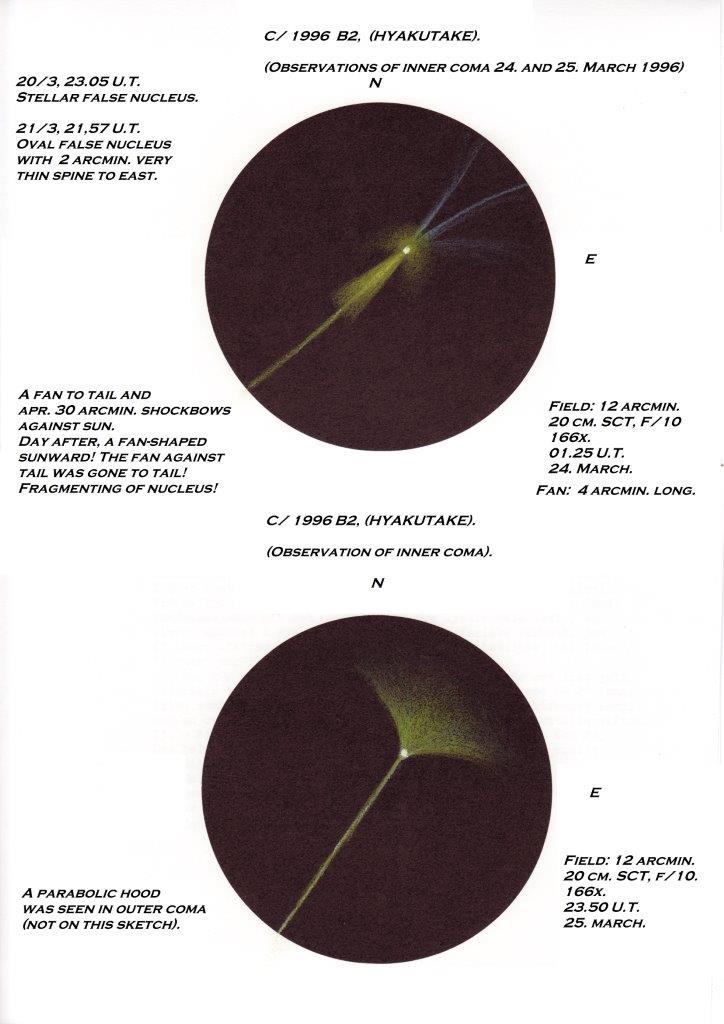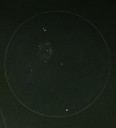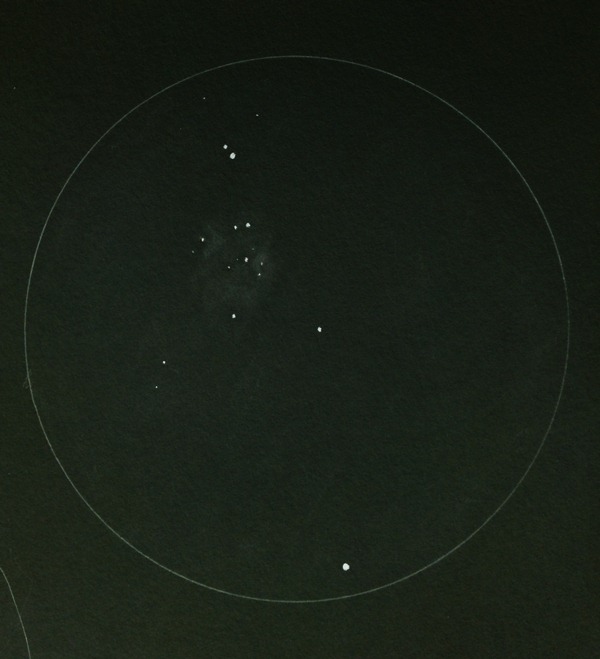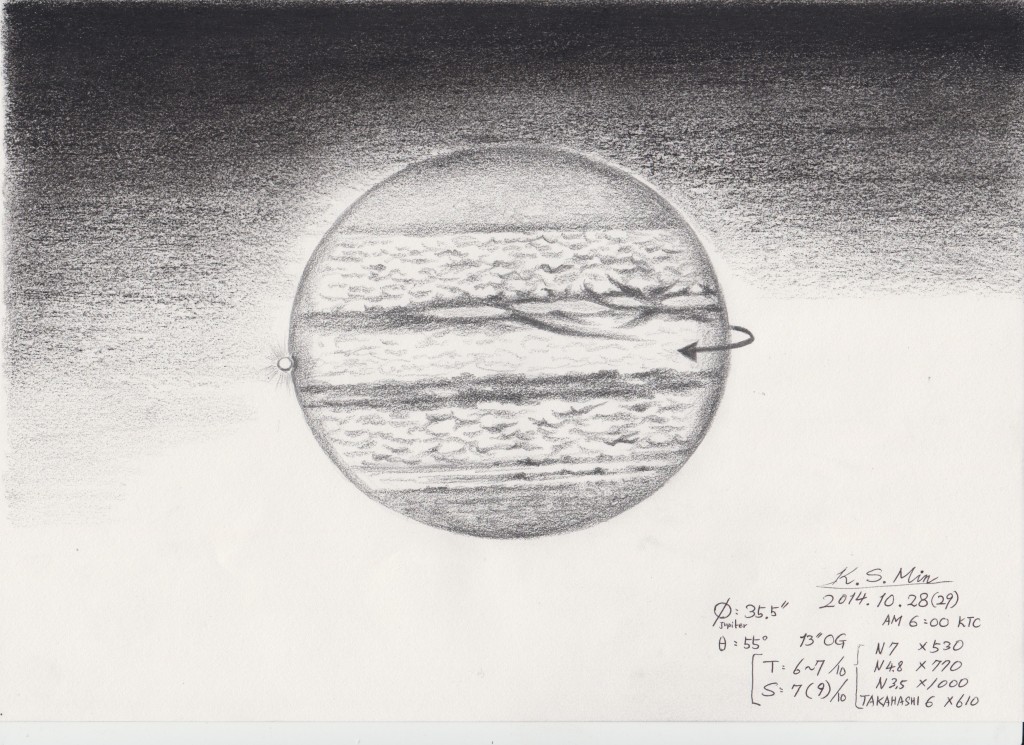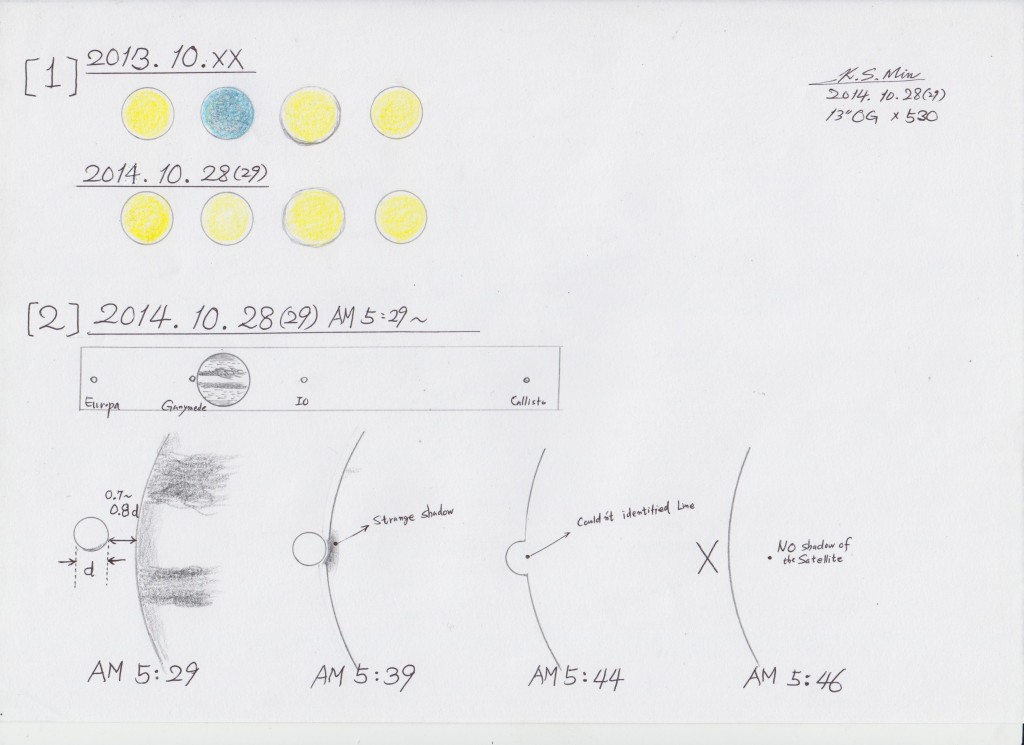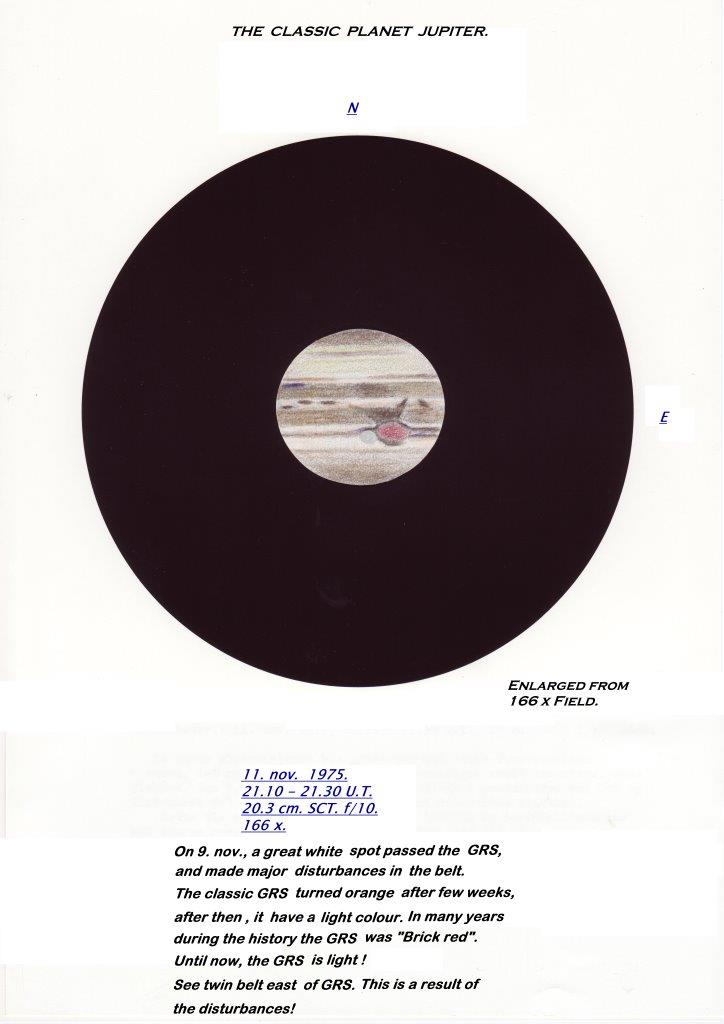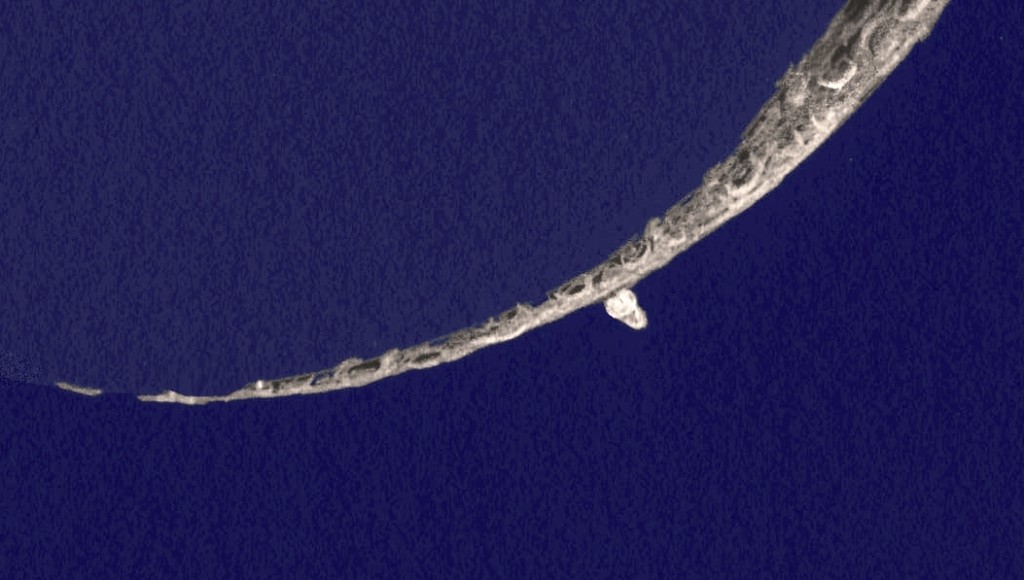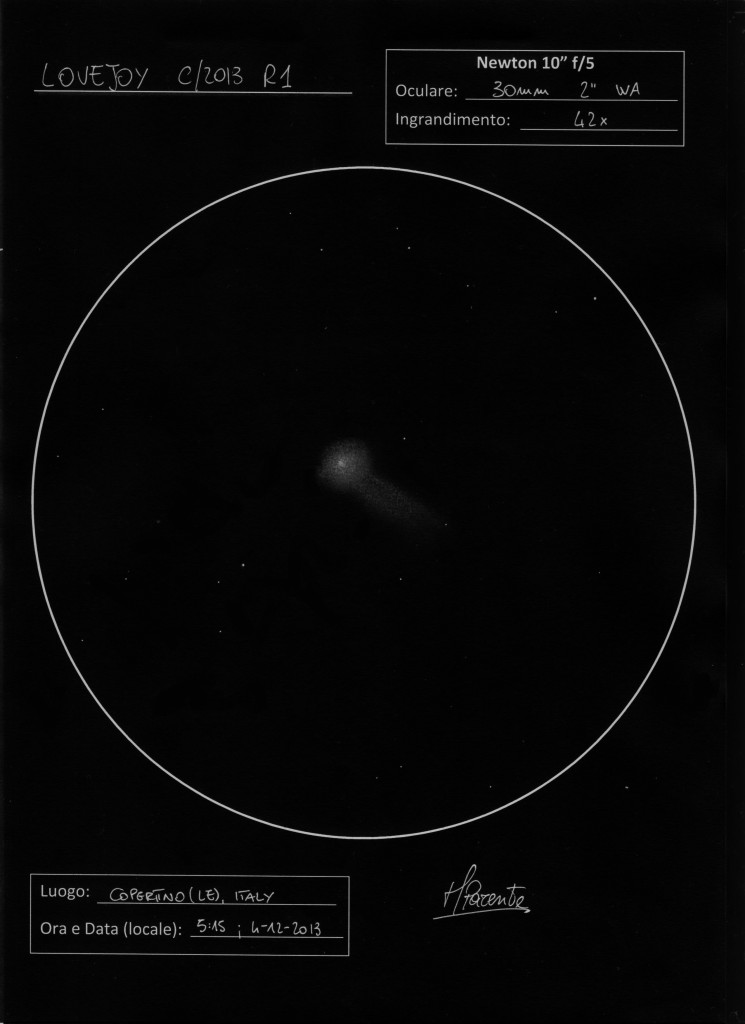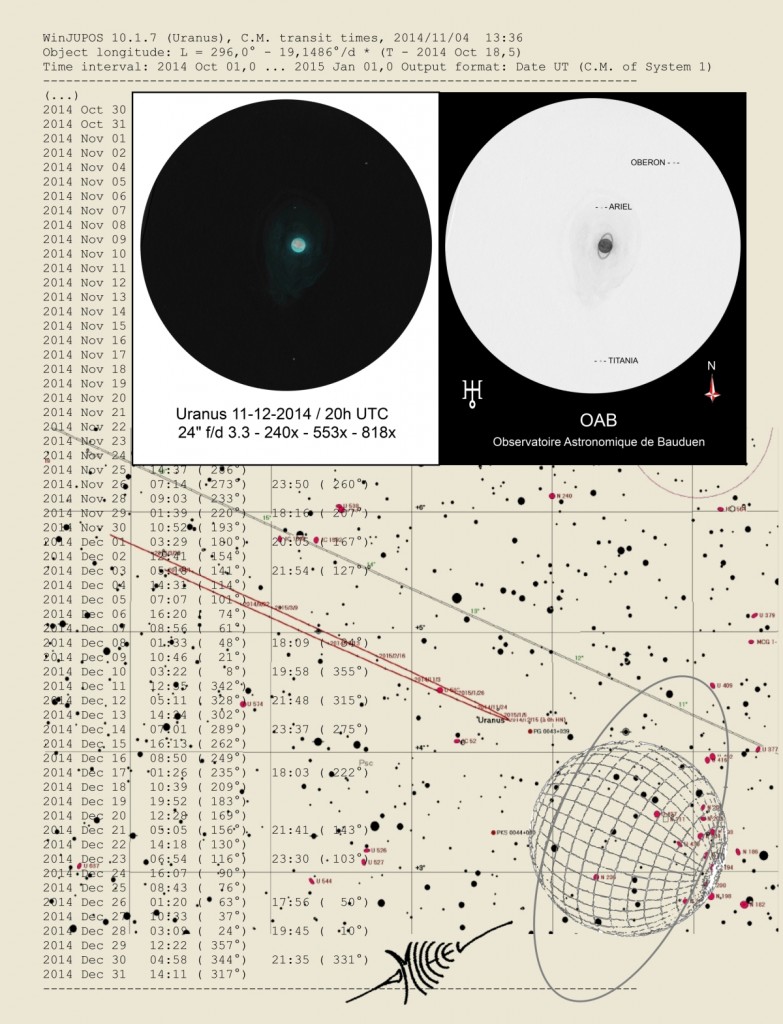
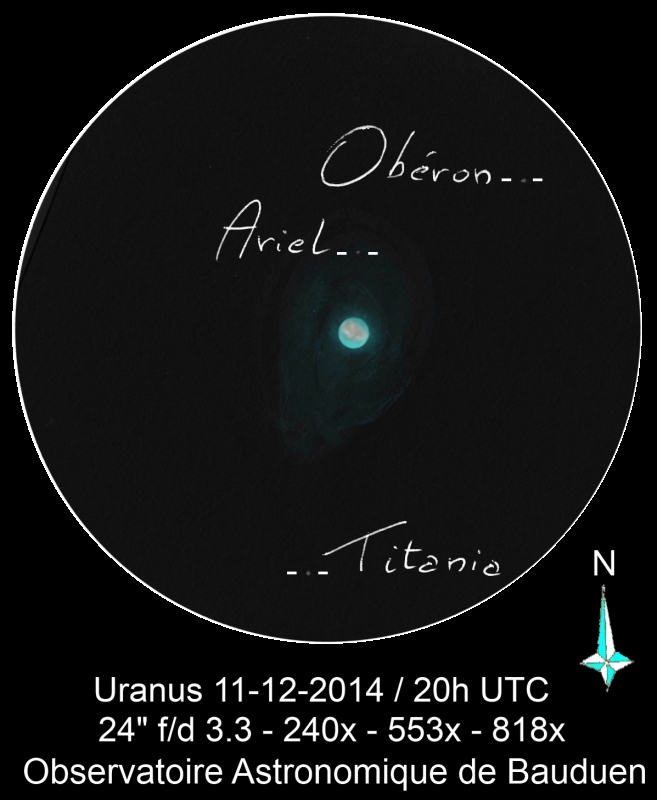
Object Name (Uranus with moons)
Object Type (Planet and satellites)
Location : Observatoire Astronomique de Bauduen, Provence France
Date 2014 Dec 11th
Media (graphite pencil, and inverted watercolor on white paper, Paint.net for the inversion)
That’s maybe because I like to use this great telescope, or it’s because I like challenges but,… it’s certainly not the best optical combination for this observation.
On 11 December, I finally found a corner of pure sky above the 24-inch reflector made by Olivier Planchon. To observe Uranus, the speed is definitely too high: f / 3.3 d, so we had to use very short focal EP to reach the useful magnification (Nagler 3.7 and 2.5) !.
If you look at my watercolor you can see a somewhat elongated comet hair that diffuse around the planet, that’s exactly how we see the planet area in the field, this is probably linked to a not 100% perfect collimation, but still. I get the impression that the work of collimation facing these big tubes, it is not a piece of cake.
Anyway, we can say two things:
1- We observed three of the Uranus satellites: Oberon, Titania and Ariel, this last one being a bit lost in the lights of the planet
2- the disk of the planet was not uniform as seen in a small telescope or some photos. It’s very difficult to confirm, but a diffuse zone clearer was observed in the upper atmosphere of Uranus, is that an artifact, I do not know? Anyway the main direction of the area is not in the direction of the cloud bands of Uranus.
Another composition of this observation is given here: http://astro.aquarellia.com/croquis/uranus_page_h.jpg


